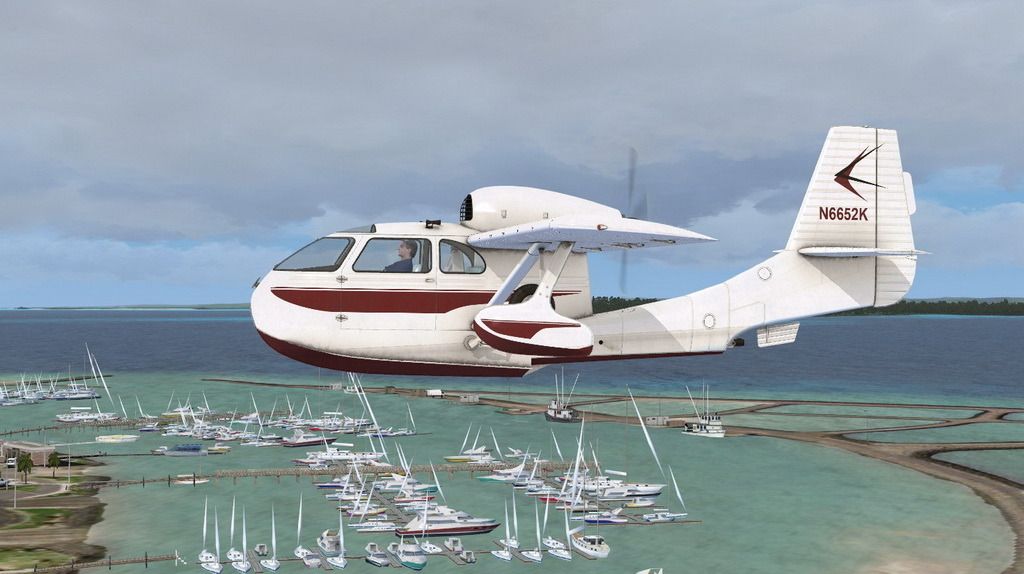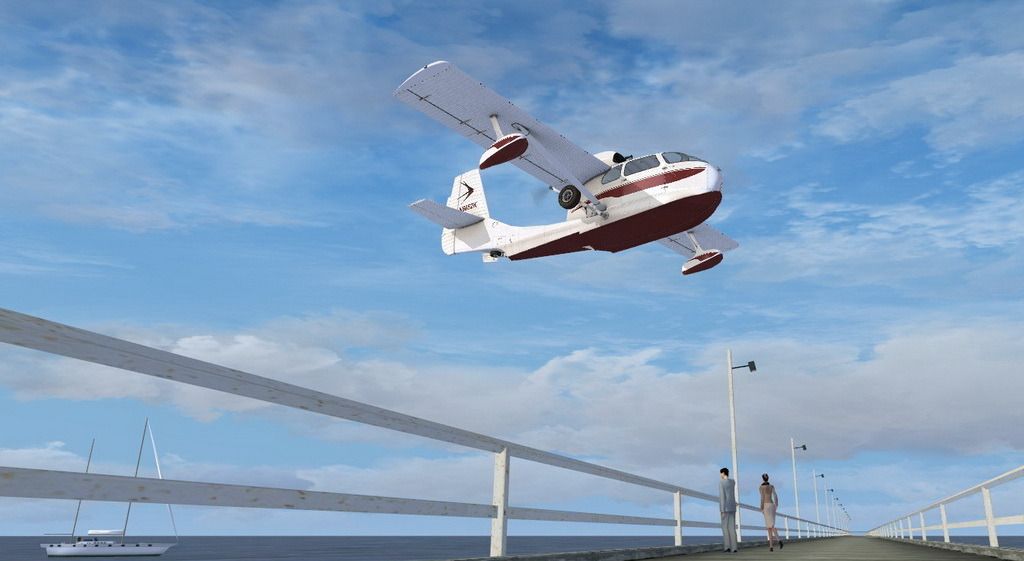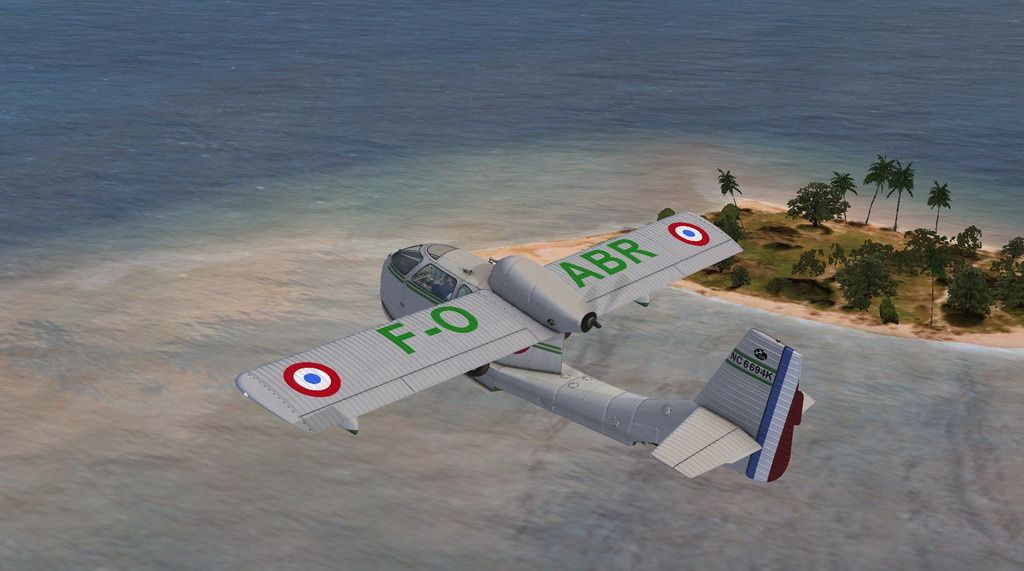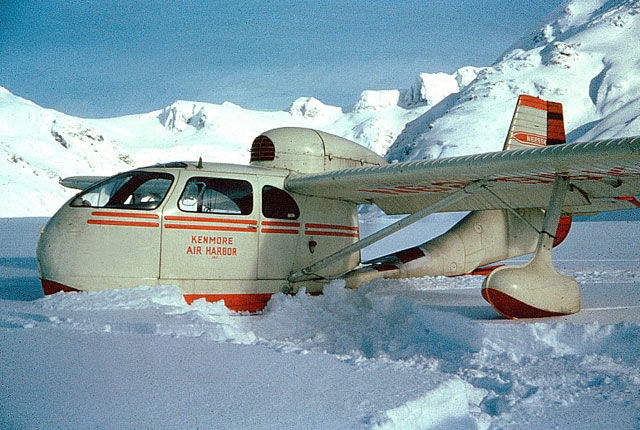Gentlemen,
Somehow i missed the Seabee completely ...

And now, out of a sudden, it landed on my hard disk. What a nice surprise! I have to say that this bird is a beauty right down to the scratches and dents of its instrument panel.
The Seabee flies well, somewhat demanding when it comes to the approach due to its (over?) sensitive rudder. Propperly trimmed one can ride like a train on its tracks but you have to apply a tiny bit of rudder to compensate the small left tendency. Landings are not that difficult one might expect from such an old plane, but you must judge your approach by watching the environment closely due to the abscence of a variometer. Otherwise it is a bush pilots dream: drop your landing gear and push the nose down. Even with some power standing it will not go beyond 70 KIAS. Be aware that the Bee usues far more runway to get airborne than it uses up for a complete halt. It is a pilots plane indeed.
Applying bump- and specular mapping to the VC was a good decision, because it adds to the athmosphere of the interior. The outer skin is well done and just with the right quantity of wear and stains. Personally, i would prefer a bit more wear and tear in the VC as well. Like the instrument panel itself which "sports" scratches and dents, the interior side panels, seats and floor should have some signs of the years of usage.
Did i read correctly in another thread that other versions of the Bee are planned? If that is the case i have a recommendation: Add a seventies or eighties instrument panel together with some "used up" interior. I mean not "worn", it should look like a well maintained interior but with the used look mentioned above.
After some flying in and out of remote locations i have to say that the Seabee is worth the bucks. It is a welcome change to the majority of GA planes available.
Well done chaps, well done.
My Thanks to the KCFS team, regards,
















